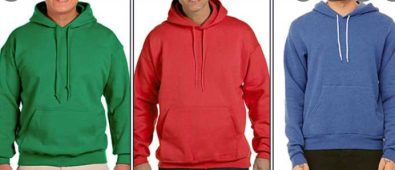Running is a great and relatively inexpensive sport. It tones your whole body, improves cardiovascular health, and even reduces cancer risk! However, to get the most out of your running workout it is essential to pick the right pair of running shoes that fit your running style and feet and make you feel comfortable. Whether you plan to train for a marathon or once a week when walking on the treadmill (some people even manage to watch films or enjoy online betting Ghana when walking!), the right running shoes will optimize your goal in run. With dozens of shoes out there choosing the right running shoes is not as easy as it may seem. To help you with the choice, here is a detailed guide that will help you pick the running shoes for you. Let’s start with the key features to look for when choosing them.
Key factors to consider
So, what are the most important factors to consider when choosing perfect running shoes?
Surface
How do you intend to run in your new running shoes? Surface (terrain) is very important because its type defines the characteristics and features of running shoes you need for the best running performance. There are two categories to choose from:
Trail running shoes
Since during running the sole is constantly hitting the surface, there must be sufficient cushioning. It will absorb such impacts and protect your feet. The role of cushioning can be performed by air cavities, gel compositions, as well as plastic curved plates or foam materials. The cushioning materials must be located not only in the toe area but also under the heel and in the middle of the sole. Some models have a thread (this can be compared to the tire tread on a car), which will protect against slipping. Other sneakers have spikes (rubber or even metal), which will allow you to run on snow or ice.
Road running shoes
Road running shoes should also have cushioning and a sole with tread. In addition, ankle fixation is required, so choose high models that fix the foot. Running shoes for aerobics or fitness will be different from those designed, for example, for running. The upper of such shoes should be lightweight and allow air to pass through and evaporate moisture. But at the same time, the foot should be well fixed. If you plan to do a bit of road running and a bit of trail running, pick the trail running shoes with little tread.
Running season (summer, fall, or winter runs)
Running shoes for summer running workouts should be made of lightweight and breathable fabrics that allow air to pass through and evaporate moisture well. Some models have a mesh surface. But opt for the shoes with rubberized edges of the sole. They will protect your feet from injuries and moisture (from puddles after rain). Running shoes for fall should be moderately warm and withstand any vagaries of nature from rain to frost. Running shoes for winter should keep warm and keep out cold air from outside, but still allow your feet to breathe. Some manufacturers use natural fur for manufacturing. This is good material, but there are many other more modern options. For example, there are popular and comfortable running shoes with in-built membranes.
Running shoe anatomy
Running shoe is made up of several parts. Let’s consider all of them below:
Outer sole
Outer sole can have a fairly deep and serious tread, spikes, and so on. Some models have shock-absorbing parts, which are necessary in most cases. The difference can be the thickness. Remember that a thin sole will not protect the foot from shocks. But, for example, doing aerobics in sneakers with a massive sole will simply be uncomfortable.
Midsole
The midsole can be removable or non-removable. When it comes to the removable midsole, you can remove, wash, or replace it, but it may move out of place during heavy movement and cause discomfort. This part of the shoe should absorb and evaporate moisture and at the same time allow air to pass through.
Upper
The upper part of the shoe should provide fixation of the foot, protect the foot from damage and the vagaries of nature, but at the same time give the feet “breathe” and also evaporate moisture. Some people prefer natural leather, which has all the necessary qualities and at the same time serves for a long time and retains its appearance, which can not be said about leatherette. Modern breathable mesh materials that allow air to pass through are also used. The membrane is great for the cold season.
Final words of advice from running shoe experts
Buying new running shoes is an important investment. Knowing your usage will help you identify the best running shoe design you need. Before you visit the store:
- It is best to try on running shoes in the afternoon, as feet tend to swell by the evening.
- Try on both running shoes at once and on running socks only, walk around the store to assess comfort.
- Inspect all the seams and other small details, they are usually the main indicator of quality.
- It is better to give preference to proven and well-established manufacturers.
- Put on your shoes and try to bend your toes. It should turn out easily. Always look for comfort: comfort is a king.
- Trial the running shoes in the store.
- Find the best running shoes for your type of pronation.
Now lace up and go for a run!



